Using The Original Fujifilm X100 In 2021
Fujifilm X100 is a special camera for me. It's the only camera that I bought new and am still owning and using today. I have full intention of keeping and using it for as long as it will work. When it stops working, I will attach it to a chain and carry it on my neck. When my neck breaks from the heavy chain ( and surprisingly hefty camera ), I will put it on a strong shelf.
About The Camera
Fujifilm is not only a special camera for me, but it's also unique in the vast world we live in. X100 is the first camera of the, now popular, Fujifilm X-Series. At the time when it was released it was still part of the FinePix family. X100 was announced in 2010 and released in 2011. This year marked the 10 year birthday!
X100 was a camera that didn't have an alternative at the time. Heck, it doesn't have a real alternative today. X100 is a premium compact camera with a fixed 23mm f2 lens. It gives you 35mm equivalent field of view in full frame world. It came out looking fabulous with a "retro""rangefinder" styling and having physical dials for both aperture and shutter speed. There wasn't anything like it around. And it had another awesome extra - a hybrid viewfinder.
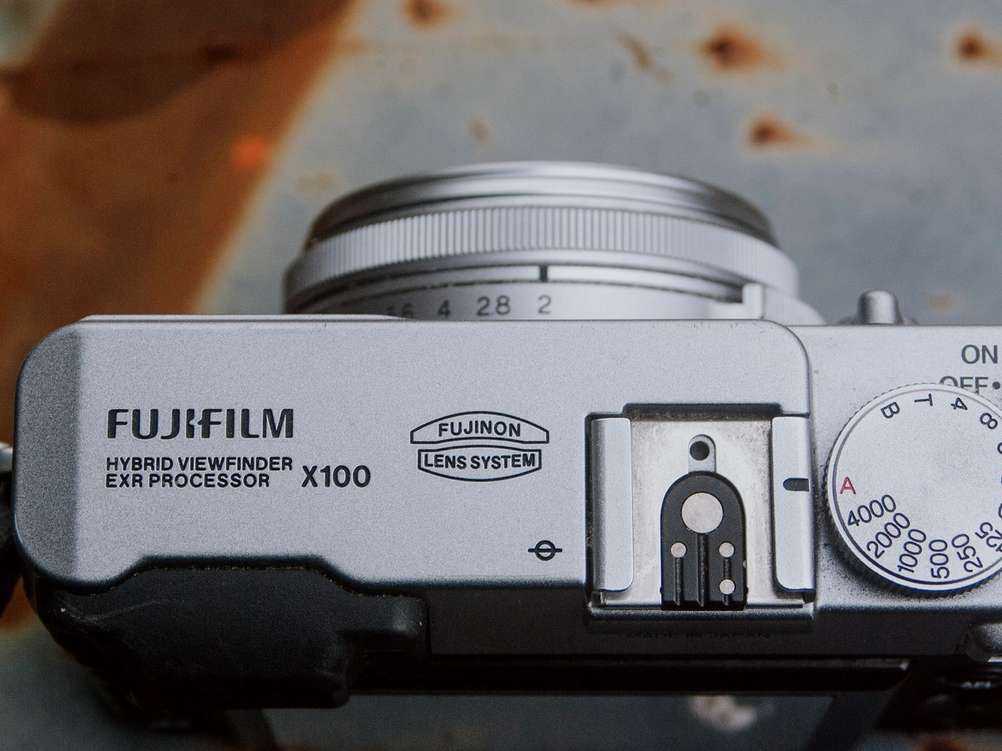
You can't miss the fact that it's a hybrid viewfinder. It's written write there on the camera!
The viewfinder is both optical and electronic. All in one. Hence the "hybrid" attachment. You can frame "through the glass" as you would do with a real rangefinder camera ( only without the rangefinder part ). You can overlay some digital information on top of the optical viewfinder. For example shutter speed and aperture. Or you can switch to an electronic viewfinder which most photographers know from today's mirrorless cameras.
Later X100 models ( including X100S which came after X100 ) had an X-Trans sensor. It's the special Fujifilm sensor that has a different filter array instead of the conventional Bayer pattern. The original X100 has a 12mpix CMOS sensor running a regular Bayer pattern. First X-Trans sensor was introduced with Fujifilm X-Pro1. X-Pro1 is like X100 but allows interchangeable lenses. And it's also sized like a "normal" camera instead of a "compact" one.
The X100 line is an active one. There are several newer versions available: X100S, X100T, X100F and the current one, X100V.
Today the camera is still asking quite a lot of money on the used market. You can expect to pay around $400 - $500. For example the X-Pro1 can be had for $100 less on a regular day. Or much cheaper if you're lucky whereas X100 cameras don't appear to have bargain deals.
Is It Still Good?
Is it still worth using this camera in 2021 ( or beyond )? Is it worth buying? I will write some words that could help answer these questions but the choice is always yours. Keep in mind that I'm a person that sees very little issues in old cameras. For example my main digital camera is a 12 year old Leica M9. I bought a Fujifilm X-Pro1 in 2021. And I regularly don't even use digital cameras and shoot film instead.
Aesthetics
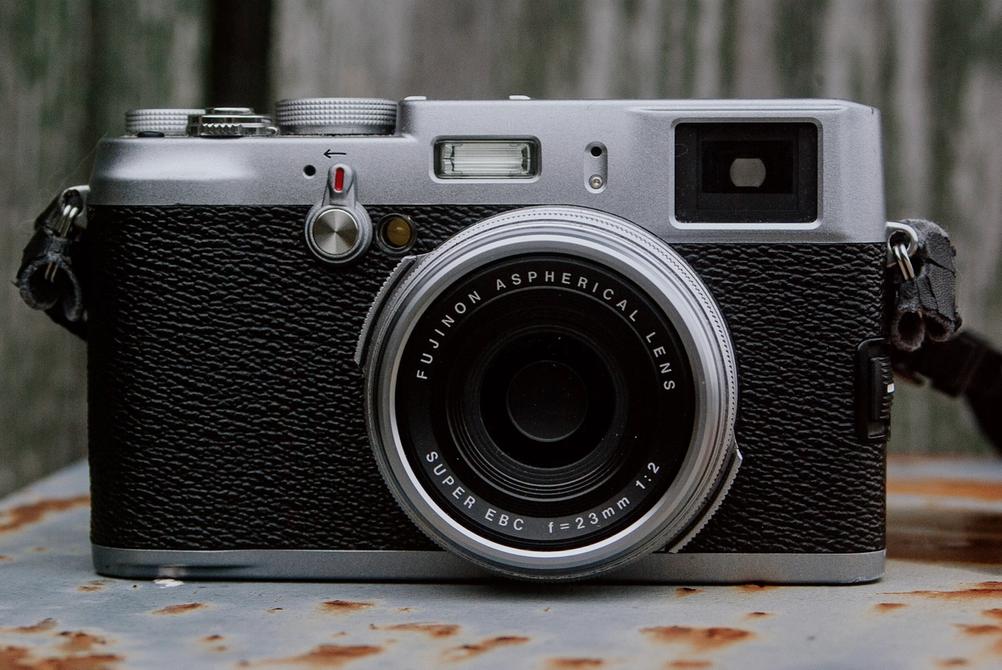
Fujifilm X100 looks very simple and beautiful at the same time.
Camera is gorgeous. "They" say that a good design is timeless which is funny in X100 case as it's a design taken from old film cameras. This is also the most likely reason why I like it. It looks as good as it looked when it was released. There are more "analog styled" digital cameras today than when it was released so you can't tell how old or new the camera is. X100 has definitely aged much better than many of the plastic dSLR cameras.
The only weak spot is the back of the camera. The area around the LCD. It looks modern and..."digital". I would be able to clean the ceiling with the erection I would have if X100 didn't have a LCD and buttons on the back.
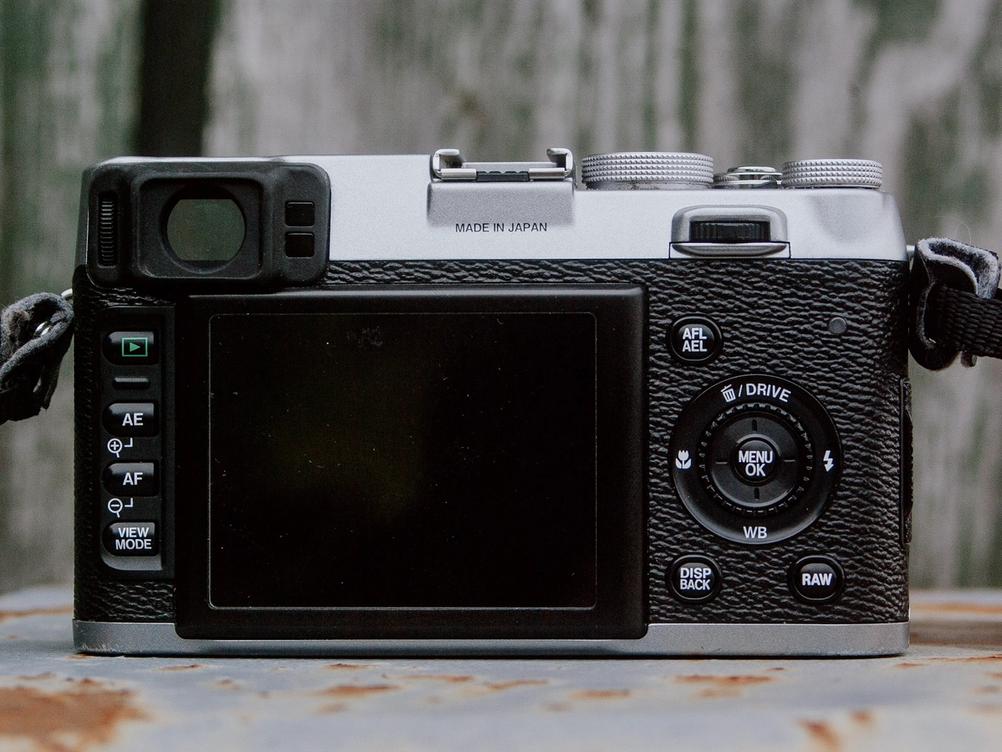
Is anyone using these buttons and LCD? If someone is, they shouldn't!
Build
The camera is built very well and feels like a good, solid object in the hand. It's also heavier than you would expect for a camera this size. And I love it! Don't read it as "X100 is heavy". Read it as "pleasantly weighty"!
Physical controls responsible for controlling everything to do with exposure also feel very nice and have a good "click" in them. Exposure dial turns well and has satisfying clicks although it does feel like it's a digital camera control. It doesn't have the crispy click of mechanical cameras. Same deal with the exposure compensation dial and aperture ring. They feel good but they have a slight dampened feel to them that's not there in mechanical cameras.
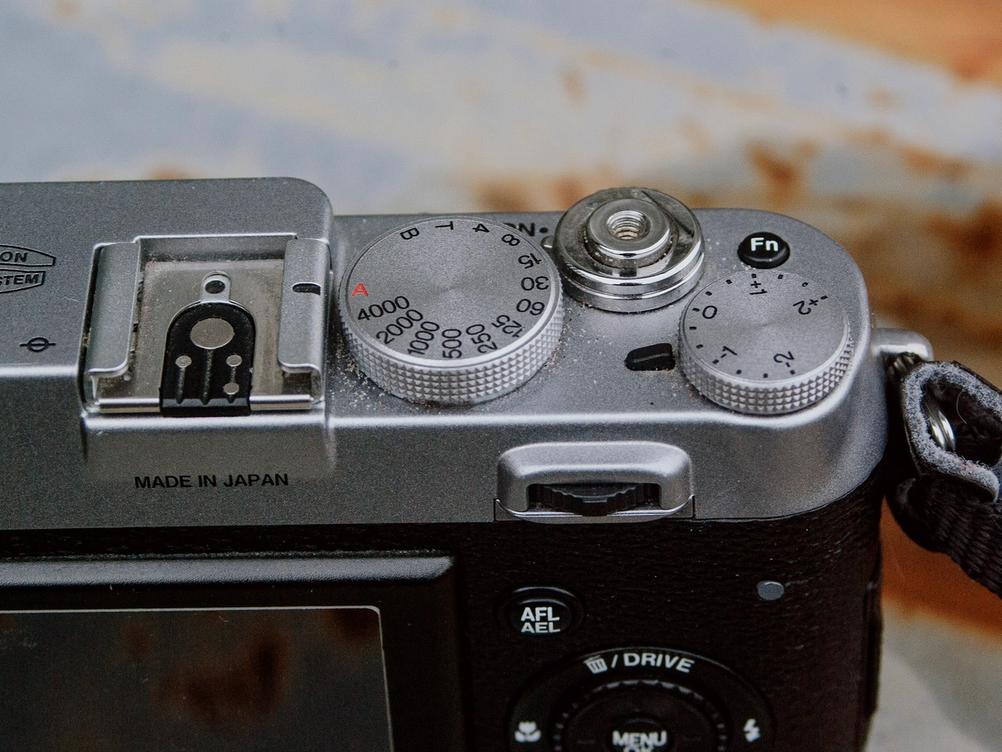
Exposure time and EV compensation dials are close together and feel very similar. Even the dust and sand particles can't disrupt the nice feel.
Buttons on the back are a different story. They feel mushy. Like it does for most digital cameras. You can't experience ecstasy when using them but they are serviceable.
The only other controls are the viewfinder switch lever and custom function key next to the shutter button. The lever has a nice, bouncy feel to it which I like. The custom function key is small but very clicky so it definitely tickles the pleasure hormones in me.
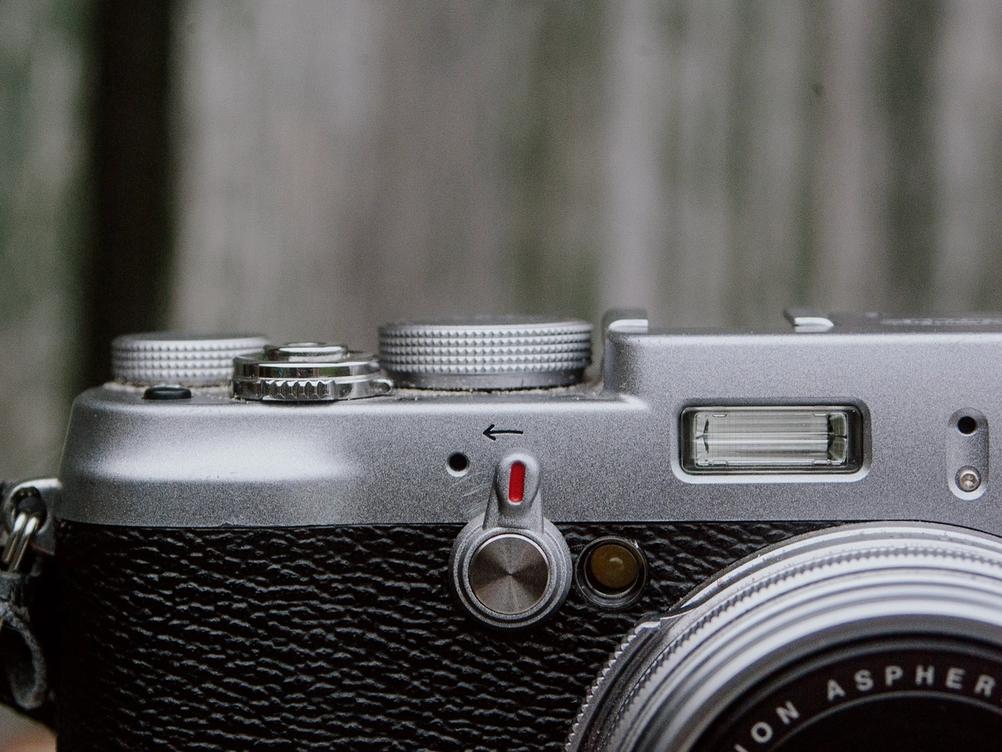
OVF / EVF switch is cute. It also sits right where your finger is when holding the camera so it's natural to use.
Although the build feels very good there are some potential issues that could cause problems for the longevity of this camera. To show the electronic viewfinder the camera needs to put blinds on the optical viewfinder. This functionality has been broken on my camera for several years now. Searching the internet reveals that this is a thing for X100 cameras. I can't give you a percentage of how many are affected but there's more than 1! All the 5-minute-crafts DIY methods didn't help me. What's left is opening the camera myself or sending it to Fuji. Neither seem worthwhile since I use the optical viewfinder 90% of the time.
Another issue I had on the last shoot was with SD card reading and writing. The camera was throwing errors to a worrying degree and I lost some photos this way. My hope is that it was a problem with the SD card. Maybe it had some issues or I forgot to format it in camera as it's a wandering SD card that I use between many cameras. I have since used a different SD card and it hasn't happened again. Fingers crossed.
Lastly the issue is not with a camera but with the charger. It has a weird plastic spacer to use when the battery is inserted. When battery is not inserted, there's nothing holding it in place so it's WAY too easy to lose it. Keep that in mind when buying this camera second hand. You can use various household items in place of the spacer but it's nicer to have the original element in place. However mis-designed it may be.
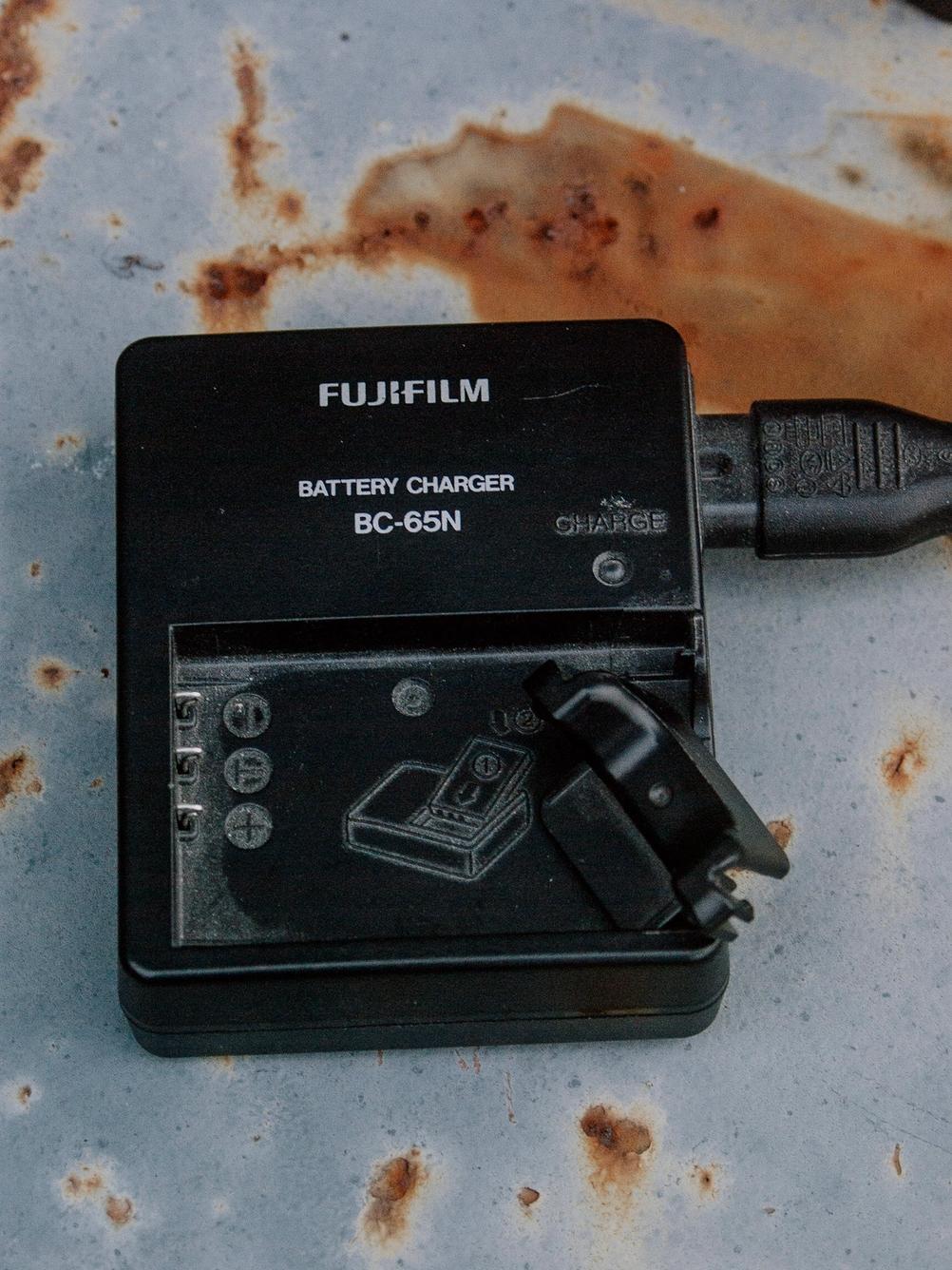
Here's the battery charger with the plastic bit out of place. You can see that it's very easy to lose.
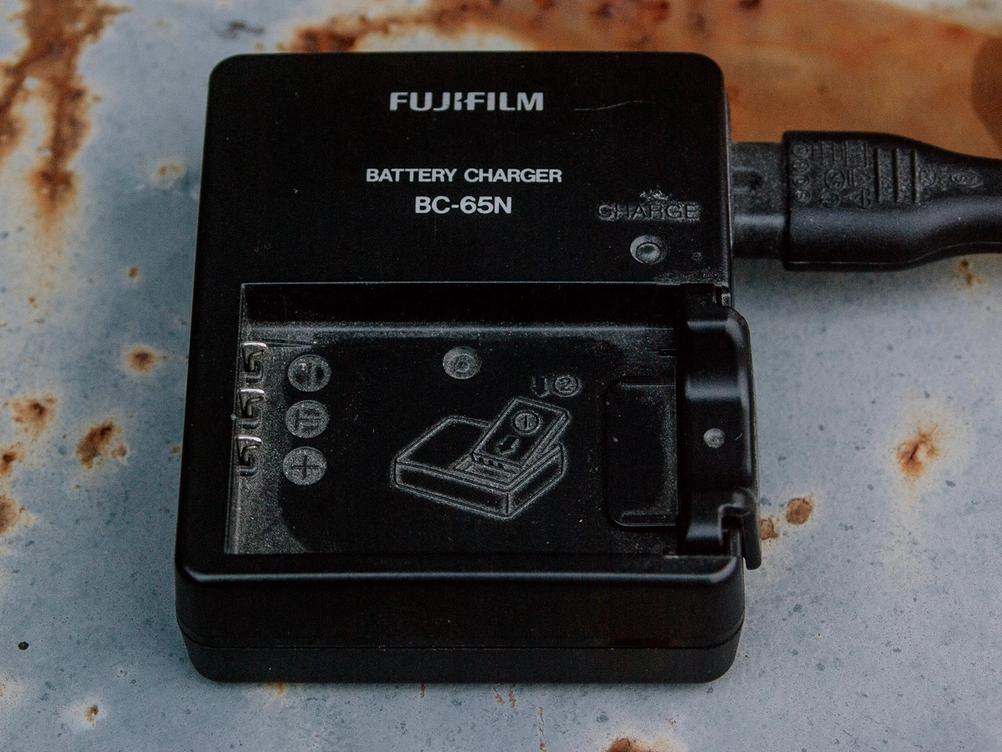
Battery charger with the plastic bit attached. I have no idea why it even needs to come off in the first place. It's the first and last battery charger that I've seen doing it.
Usability
One of the most important things in a camera is whether it's nice to use. If it is then you want to pick it up more often which will result in more photos being taken. With great pride I can inform you that X100 is nice to use. Very nice in fact. It's hard to pinpoint what makes it so but you feel joy whenever holding the camera in your hand. It could be because it's so simple and yet offers a lot of options to aid in the shooting process.
The best of all is the viewfinder. It's amazing to have an optical viewfinder with electronic information layed on top of it. I pretty much don't use the electronic viewfinder. It could be the reason why the blinds got stuck as they never had to open and close. It's not as good as a real rangefinder for me but nothing can be.
X100 doesn't have the ERF / dual display functionality that X-Pro2 and X100T has but it's not a huge loss. ERF is a small electronic screen in the bottom corner of the optical one that shows you a zoomed in view to help with focussing. It's more useful in X-Pro cameras where one might be using older manual lenses but not so much in X100 where autofocus is used most of the time.
Speaking of focussing and optical viewfinders, that's another small pain point. You have a focus area rectangle that will turn green if the camera has focussed and red if it hasn't. But even if it's green you don't know what it's focussed at. It could be focussed at a lone bush 50 meters away where you wanted to focus on someone's face 2 meters from you. For the most part this is not an issue if you're focussing on subjects that are 2ish or more meters away but will become an issue if it's closer. Autofocus this close isn't as reliable so you will want to switch to either EVF or use the LCD for focussing.
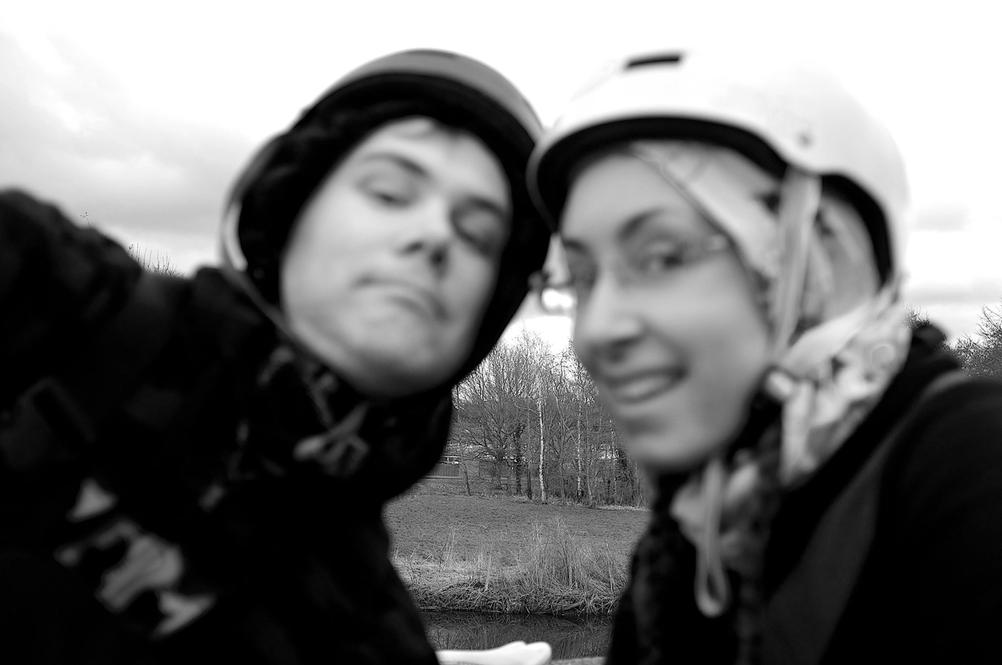
- Camera
- Fujifilm X100
- Lens
- Fujifilm Fujinon Super EBC 23mm f2
Gotta love those trees in the background.
Focussing speed itself won't blow any minds but it's very capable and doesn't cause issues 95% of the time. At least for the shooting that I do which is taking photos of what's around me. Close focussing is more of an issue and hit / miss ratio will be worse but you can still get by.
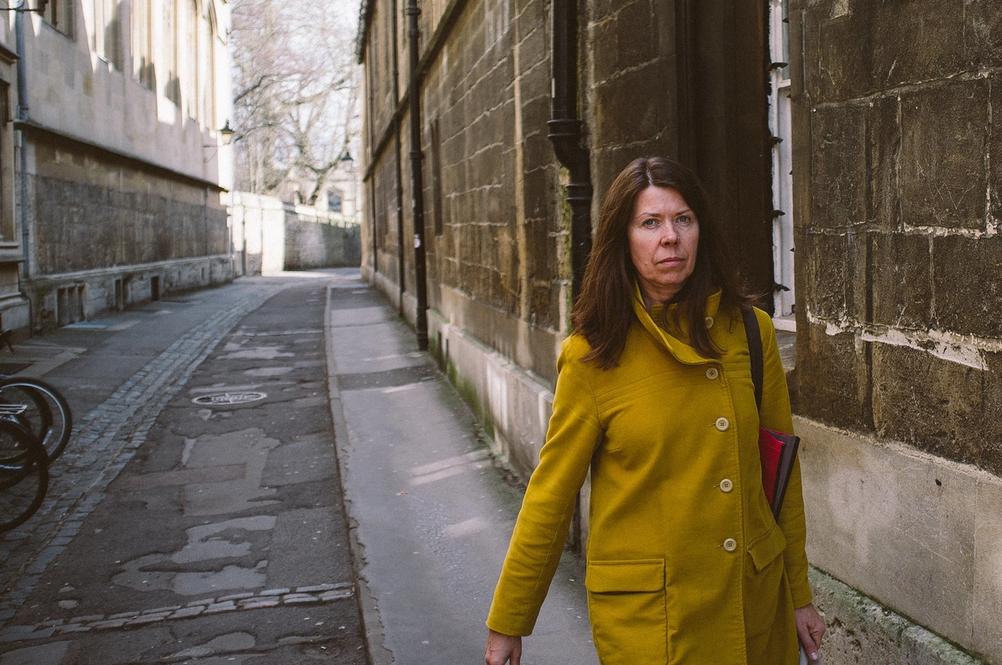
- Camera
- Fujifilm X100
- Lens
- Fujifilm Fujinon Super EBC 23mm f2
Autofocus is reliable enough to be used on the streets without the need to pre-focus or scale-focus.
There is also manual focus but the lens focuses by wire which means that there isn't much else to say. But I will anyway. Focus by wire is an abysmal invention by the illuminati to cause pain for the common-folk. It shouldn't exist. It never feels good. I wish the X100 had a lens that you can focus mechanically. Combine that with the no LCD display and the erection would destroy the roof of my house.
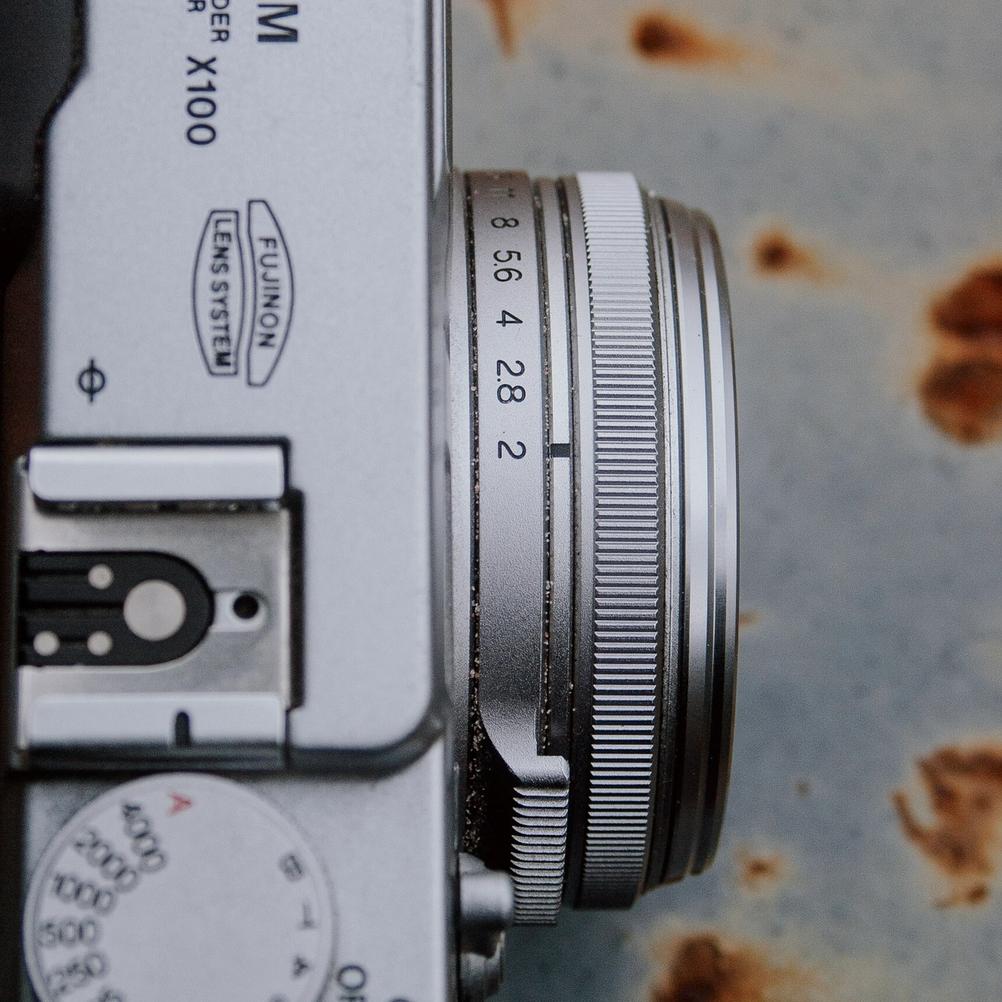
Fujifilm X100 lens with many "tiny dust" and many "not so tiny sand" particles on it. Near Mint.
Luckily the aperture ring turns like new. It's also nice to have the handles for the aperture ring which definitely helps in turning it.
Focus-by-wire focus ring is also visible in this photo...
Another small niggle is that there is no physical dial to control the ISO. You can map some buttons to do it but it's not the same as having a real dial to turn to a real number. It's not a big issue though as more often than not you will use either a single ISO or Auto ISO. You're not fiddling with ISO settings on a film camera that often are you? If it's important to have it then you will have to get X100F which adds a physical dial for ISO ( combined with the shutter speed dial ). X100 does have a physical exposure compensation dial which is a better choice than ISO dial as it's something that is used more often.
One nice thing is that there is a built-in 3-stop ND filter which you can turn on and off as you wish. Before you get your hopes up, no, you won't be able to use it in bright daylight to shoot wide open. Fastest shutter speed at f2 is 1/1000 of a second. The shutter speed will increase the smaller the aperture gets. Up to 1/4000 of a second. This is because the camera has a leaf shutter. In reality this is not an issue as this is not a bokeh camera so having a ND filter as an extra is cool.
Camera itself feels good in the hand. Although the camera is classified as "compact" it's not really that compact. Sure, it's smaller than a regular mirrorless camera and it's definitely smaller than a SLR but it's not as compact as, say, Fujifilm XF10. Even so it feels right at home in my hands. Whilst not the most compact you can still fit it in large enough pockets.
Image Quality
Finally we have reached the image quality section. For some this will be the most important point and for others, not so much. I do care about image quality but I also care about how the camera feels. I am very willing to have a "worse" image quality if the camera feels better in use. Because what really is "worse image quality"? At the end of the day it doesn't matter as most modern, digital cameras deliver good results. No matter if it's 1 or 10 years old. That being said, if image quality ranks higher for you then you are more likely to shoot with a camera with one so it can be important.
It's good news then that the image quality is very solid. Yes, the sensor is only a 12mpix one but it's a good one. I used Sony A7S for a long time with 12mpix sensor and it was fantastic. I didn't sell it because of the megapixels.
I also have a Fuji X-Pro1 which has a similar era 16mpix X-Trans sensor and for some reason I give a small edge to the X100 photos. I can't explain why I like them more but I do. They include some hidden code that makes my brain like them more.
"Some people on the internet say" that the lens on X100 ( and X100S, X100T and X100F because it's the same lens on all these ) is soft wide open. I don't see it. I just don't. Maybe on later, higher megapixel models the lens can't deliver to the same level as it can on a 12mpix sensor but results seem plenty sharp wide open to me. It could require a deep inspection of every individual pixel to see the softness. The newest X100V has a redesigned lens that is said to be sharper. If peak sharpness is what you need then consider that.

- Camera
- Fujifilm X100
- Lens
- Fujifilm Fujinon Super EBC 23mm f2
For people the f2 aperture is more than good enough.

- Camera
- Fujifilm X100
- Lens
- Fujifilm Fujinon Super EBC 23mm f2
The camera is also sharp enough for non-human portraits. It can easily resolve all the hairs.

- Camera
- Fujifilm X100
- Lens
- Fujifilm Fujinon Super EBC 23mm f2
Here is another portrait of a wonderful model to prove the sharpness point.
X100 will reach the most sharpness at around f4 / f5.6 but I don't see wider apertures as deal breakers in any circumstance.
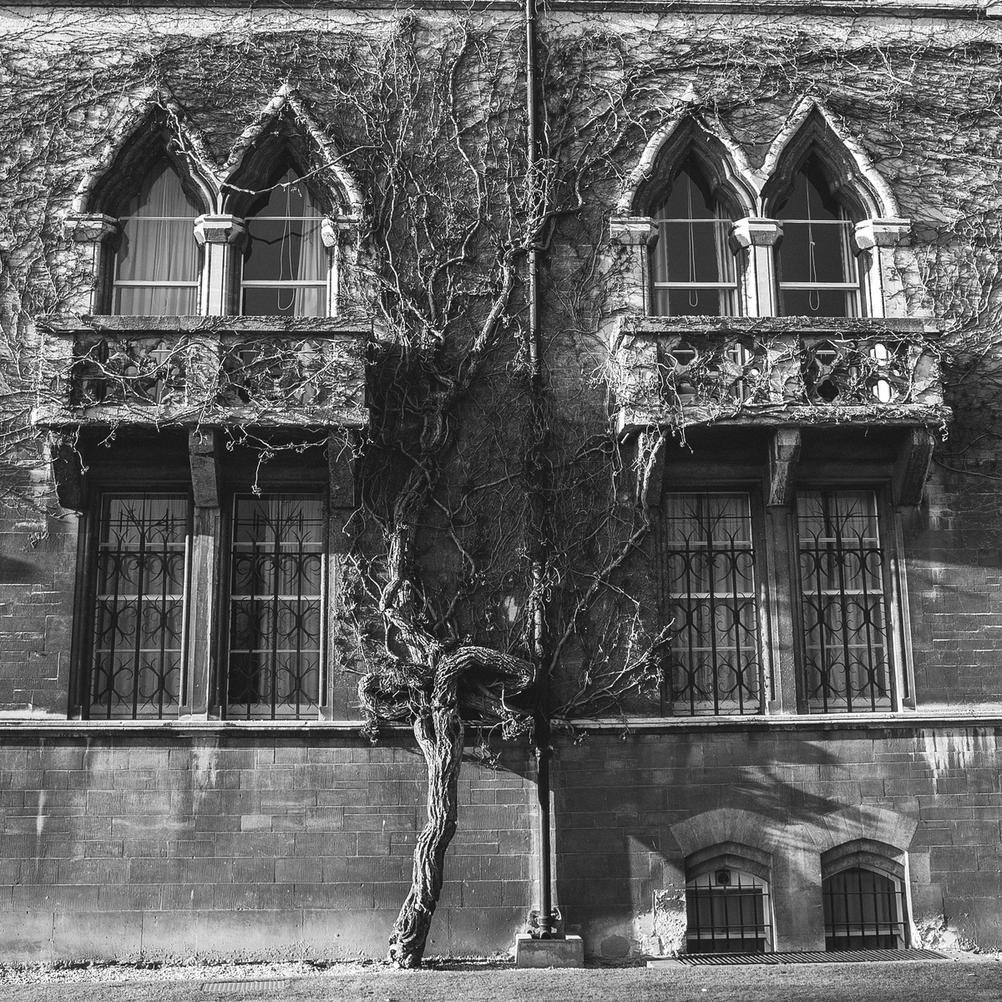
- Camera
- Fujifilm X100
- Lens
- Fujifilm Fujinon Super EBC 23mm f2
12mpix is enough to allow you to crop.
You can't expect large background destruction through the powers of bokeh from a wide-ish lens but you can still instill some fear in it. Bokeh is quite smooth and not in your face. It doesn't have any "vintage", "classic lens" optical faults that can give bokeh a certain magic feel, but it's OK. Subjects can be separated with confidence and sometimes a small "pop" from a three dimensional realm shows its head. But not too often.

- Camera
- Fujifilm X100
- Lens
- Fujifilm Fujinon Super EBC 23mm f2
Because you can focus quite closely with the X100, you can still blur some backgrounds.
I can only describe the colors and contrast as very natural and not in your face. It looks like it should. Once again a small magical touch is missing, but it's very consistent.
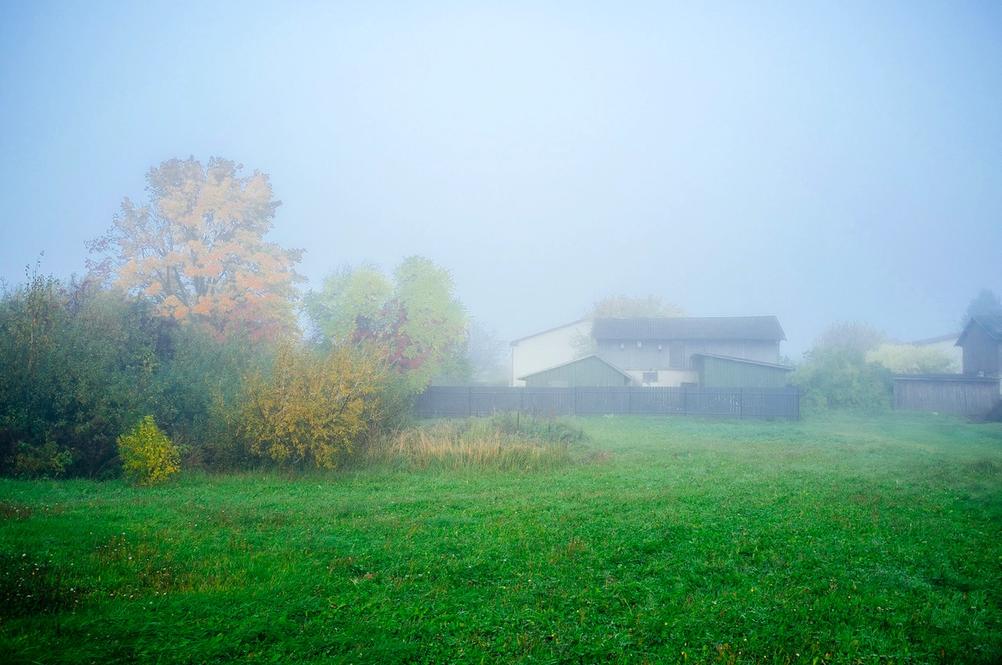
- Camera
- Fujifilm X100
- Lens
- Fujifilm Fujinon Super EBC 23mm f2
X100 will give you good colors. And you can also achieve that nice glow effect...if you have mist outside.
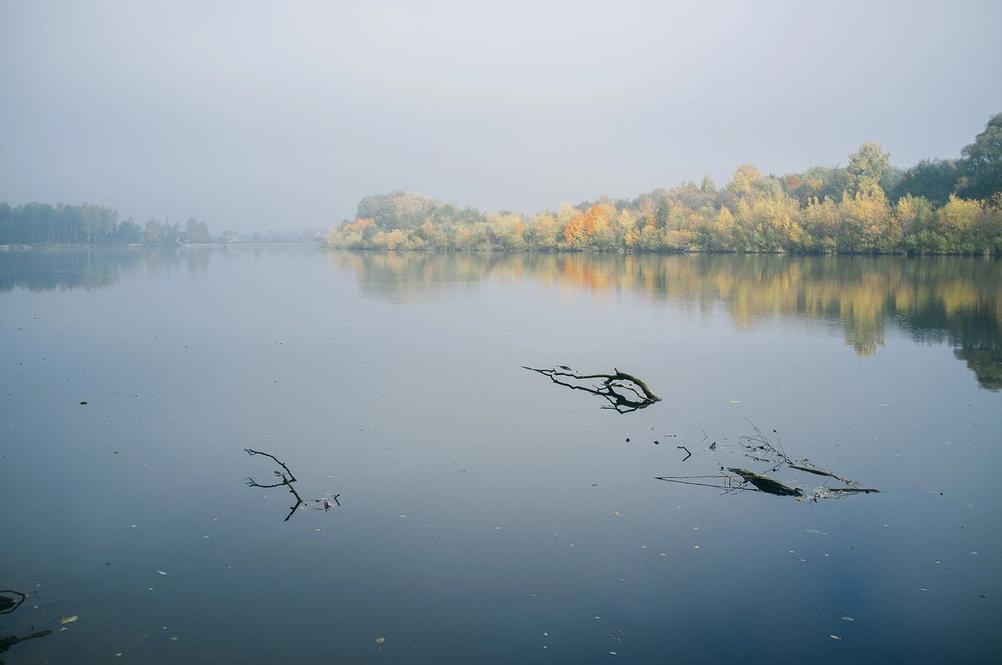
- Camera
- Fujifilm X100
- Lens
- Fujifilm Fujinon Super EBC 23mm f2
Light mist and autumn colors go hand in hand with X100.
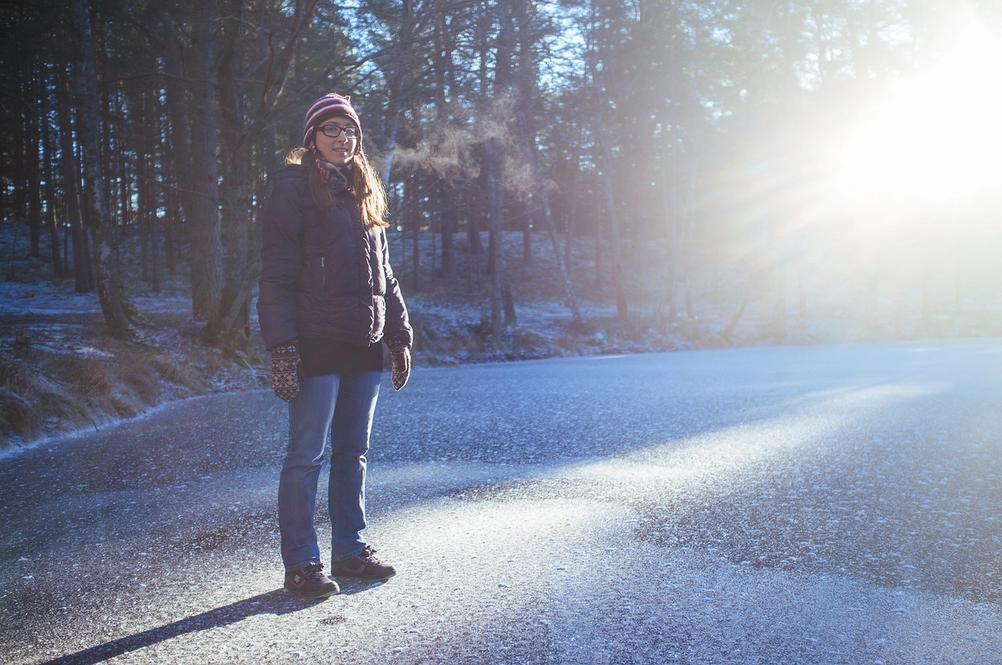
- Camera
- Fujifilm X100
- Lens
- Fujifilm Fujinon Super EBC 23mm f2
This is how the lens handles flare. It's not too bad. Definitely some contrast loss but nothing some digital post-processing can't solve.
You can also see that the camera works in sub-zero temperatures.
One aspect where older digital cameras will lag behind newer ones is ISO performance. This is also the case here. Although not as terrible as some other cameras, you can't expect much more than ISO 1600 if you want to keep colors in your photos. Push it a stop or two more for black and white. The noise is "grainlike" so will fit well with black and white photos. High ISO is not something that I value too highly so, once again, it doesn't feel like a big downside.

- Camera
- Fujifilm X100
- Lens
- Fujifilm Fujinon Super EBC 23mm f2
Focusing and image quality will go down the darker your surroundings get but it doesn't mean that X100 is unusable in the night. You can still capture weird creatures on the streets.

- Camera
- Fujifilm X100
- Lens
- Fujifilm Fujinon Super EBC 23mm f2
Switching to black and white will give you even more flexibility in the dark.

- Camera
- Fujifilm X100
- Lens
- Fujifilm Fujinon Super EBC 23mm f2
Here is what you can expect at ISO1600. Some detail loss and also a bit more wonky colors. Could be a lot worse though.
Is It Still Worth It?
If you, like me, have this camera then I'm sure I don't need to tell you this, but it's still great to use in 2021 and beyond. It delivers very capable results where you won't feel like you're missing out on something from newer cameras. And best of all you will feel great using the camera as that is something that using it will do to you.
If you don't have this camera already then it becomes a more difficult proposition. If the price was cheaper, say $200 - $300, then I would recommend getting this camera, even today. With the current prices it's more difficult to do so. X100S, which is the next iteration of this camera, costs almost the same. It's very close to the X100 but with a 16mpix X-Trans sensor and improved autofocus ( that you probably won't feel ). Is X-Trans better? Not to me but it comes down to personal preferences. Add $100 - $200 and you can get anX100T. Add the same again for an X100F. And once again to get the newest X100V. With these price differences it's hard to say whether the OG X100 is the best choice.
If it wasn't for the small issues that I've had with the camera, like the EVF blinds not working, then I would be more confident with my recommendation. Sadly those issues happen. And they could happen to you.
I have not used newer X100 versions so can't tell whether they are better and if they are then by how much. What I can tell you is that I don't feel that I need to upgrade. X100 still fulfills me and delivers results that I'm very happy with. Newer isn't always better, especially if something you have now makes you happy.
At the very end of the day, when we are reaching midnight, I can't give a definite answer. Hopefully something that I've written will help you in your choices but I must part ways with you now and leave you to be the adult in your decision. All I know is that X100 is worth it for me.

- Camera
- Fujifilm X100
- Lens
- Fujifilm Fujinon Super EBC 23mm f2
Focussing on something in the middle when you have a foreground and background to focus on as well isn't always easy. But you can still do it.

- Camera
- Fujifilm X100
- Lens
- Fujifilm Fujinon Super EBC 23mm f2
Although auto-focus isn't the fastest, it's still fast enough for most needs.

- Camera
- Fujifilm X100
- Lens
- Fujifilm Fujinon Super EBC 23mm f2
X100 was the camera that took my most popular photo on Flickr. Most popular when counting the total view count.
It might be because of the photo. Or it might have been because of the name that I gave this photo...

- Camera
- Fujifilm X100
- Lens
- Fujifilm Fujinon Super EBC 23mm f2
X100 photos convert to black and white with good results.
